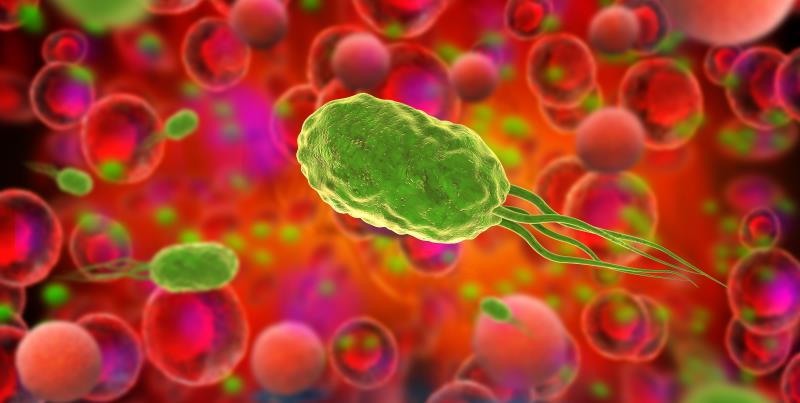
Helicobacter pylori-eradication therapy (HPET) in patients with nonalcoholic fatty liver disease (NAFLD) leads to greater improvement in homeostasis model assessment-insulin resistance (HOMA-IR) but exerts comparable effects on hepatic steatosis and liver enzymes as compared with diet and exercise alone, a study has shown.
The trial included 80 NAFLD patients with H. pylori coinfection, 36 of which were assigned to receive standard management therapy (SMT; diet and exercise) and 44 to HPET (SMT plus amoxicillin, clarithromycin and pantoprazole).
A total of 28 patients in the SMT group and 36 in the HPET group were included in a modified intention-to-treat population. At week 24, controlled attenuation parameter (CAP) scores significantly decreased in the two groups (p=0.002 and p<0.001, respectively), without significant between-group difference (p=0.213).
H. pylori infection was successfully eradicated in 68 percent of patients in the HPET group. This group of patients showed greater improvement in HOMA-IR at week 24 compared to nonresponders or those treated with SMT (p=0.007).
There were also significant reductions observed in liver enzymes in both groups, although the changes between them were similar. Meanwhile, lipid parameters remained stable at week 24 . The HPET group exhibited a significant increase in the levels of reduced glutathione, but the change was not statistically different relative to the SMT group.
More studies involving a larger sample size, more effective HPET regimen and paired liver biopsy are needed for improved understanding, the researchers said.